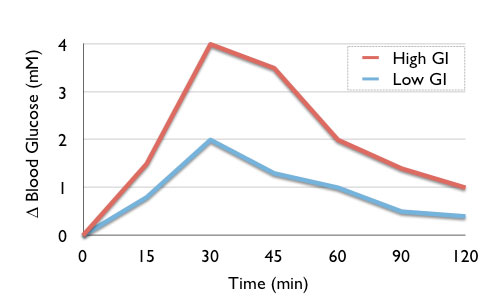7 Things to Know About Glycemic Index

The glycemic index or glycaemic index (GI) is used to measure or a procedure to measure how fast or how quick the blood glucose levels i.e., blood sugar levels rise after eating a particular type of food. Different foods have different effects on the body and it may vary considerable depending on a lot of things. The same food when prepared differently can have different GI ratings. Potato is a good example as baked, fried and toasted potatoes have different GI ratings. The glycemic index asseses how much every gram of available carbohydrate -total carbohydrate minus fiber, in a food raises a person’s blood glucose level after they have eaten, relative to ingestion of pure glucose. Glucose has a glycemic index of 100. Here are some things one should know about the Glycemic Index.
1. It does not take into account the amount of carbs actually consumed
One limitation or back draw of the glycemic index is that it does not take into account or consider the amount of carbohydrate actually taken in the body. A related measure, the glycemic load, factors this in by multiplying the glycemic index of the food in question by the carbohydrate content of the actual serving.
2. The Glycemic Index do not factor into it the variations in food
Glycemic index charts often give only one value per food, but variations are very much possible due to variety, ripeness, the way of cooking, processing, the spices added and the time it has been in storage. Potatoes and other tubers are a notable example, ranging from moderate to very high GI even within the same variety.
3. The GI is different for the same person through the day
The glycemic response is different from one person to another and the same index cannot be used for everyone as the metabolic rate for people differs. It also differs in the same person from day to day, depending on blood glucose levels, insulin resistance, and other factors such as physical activity and stress.
4. It is not really accurate
Most of the values on the glycemic index do not show the impact on glucose levels after two hours. Some people with diabetes may have elevated levels after four hours. You never know when to take the test and when it will show the right value.





